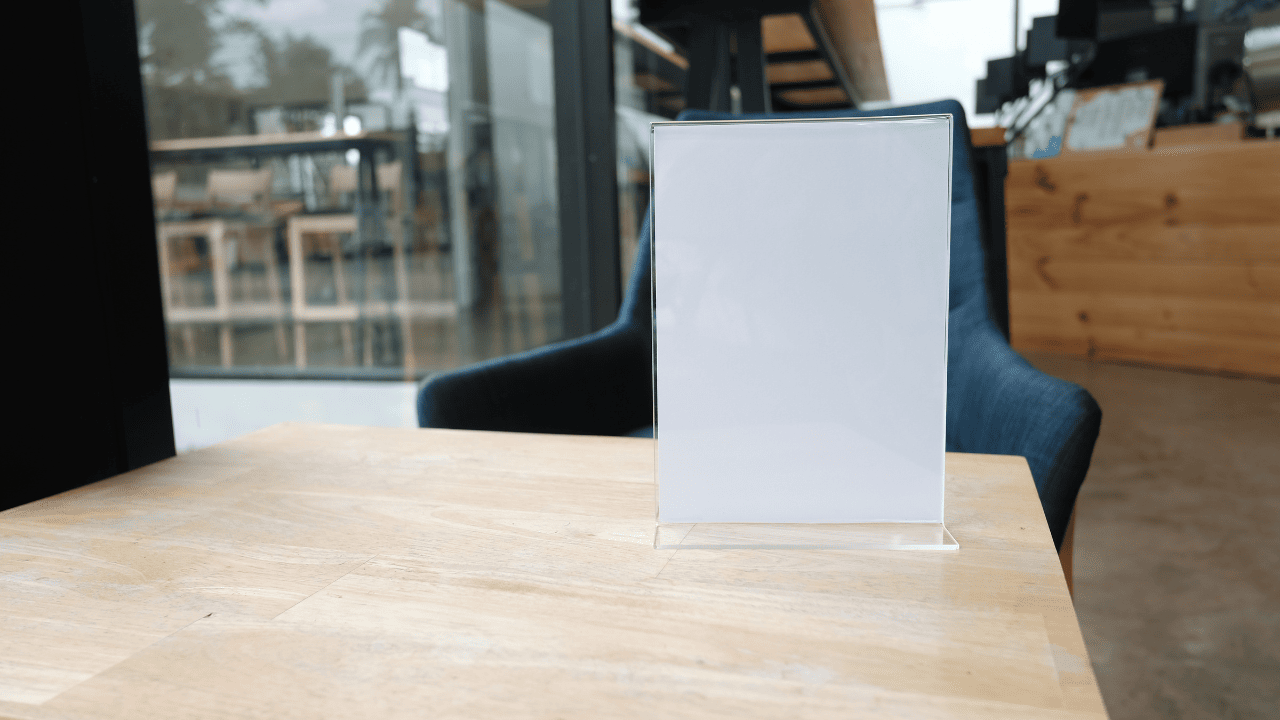Key Takeaways
- Cloudy acrylic is often caused by surface scratches, dirt buildup, or chemical reactions, all of which can be restored with proper cleaning and polishing.
- Using mild soap, warm water, and a microfiber cloth helps remove grime without causing further damage to the acrylic surface.
- Polishing with a plastic polish or fine-grit sandpaper can restore a smooth, clear finish to scratched acrylic panels and display cases.
- Avoid using paper towels, ammonia-based cleaners, or rough cloths, as they can introduce micro-scratches and permanently degrade the acrylic.
- Regular maintenance, proper storage, and the use of specialized acrylic cleaners ensure long-lasting clarity and a professional presentation for business displays.
Acrylic is a fantastic material—versatile, durable, and visually appealing. However, over time, it can become cloudy or scratched, diminishing its professional look. Whether you're using acrylic for retail displays, greeting card holders, or signage, maintaining its crystal-clear transparency is essential. Fortunately, restoring acrylic is simple with the right techniques. This guide will help you make acrylic transparent again, ensuring your business displays remain pristine and professional.
The Importance of Clear Acrylic
Crystal-clear acrylic enhances the aesthetic appeal of your business displays, making products and information easily visible. A cloudy or scratched acrylic panel can make your setup look unkempt and unprofessional, potentially deterring customers.
Professional Presentation – Clear displays create a polished and high-end look.
Better Visibility – Customers should see your products or information without obstruction.
Longer Lifespan – Well-maintained acrylic plastic sheets last longer and save replacement costs.
Positive Customer Impressions – Foggy or dirty acrylic surfaces can suggest neglect, which may negatively impact your brand perception.
By keeping your acrylic displays pristine, you create a more inviting and trustworthy business environment.
Understanding Acrylic Cloudiness
Cloudiness in acrylic often results from surface scratches, dirt buildup, or chemical exposure. These issues can be resolved with proper care and maintenance. Before diving into restoration methods, it's crucial to determine the cause of the haziness.
- Surface scratches: Common from everyday use, these can scatter light and reduce clarity.
- Dirt and grime: Dust and fingerprints accumulate over time, creating a dull appearance.
- Chemical reactions: Some glass cleaners react negatively with acrylic, leading to a foggy finish.
Once you identify the issue, you can use the appropriate method to restore your acrylic's transparency.
Cleaning Acrylic the Right Way
Regular cleaning is the first step in maintaining clarity. Using improper cleaners can worsen cloudiness, so it’s important to use safe materials.
Recommended Cleaning Steps
- Use a gentle cleaner – Mild soap and warm water work best. Avoid ammonia-based cleaners like glass sprays.
- Microfiber cloth – Use a soft cloth or microfibre cloth to prevent scratching.
- Rinse and dry properly – Rinse with lukewarm water and pat dry with a clean cloth.
For deeper cleaning, an acrylic cleaner can be used. Always follow the manufacturer’s instructions to avoid damage.
Removing Scratches and Restoring Transparency
Scratches are a common cause of cloudy acrylic. Polishing can effectively restore the material's smooth surface and clarity.
Steps to Polish Acrylic
- Choose a polishing compound – Use a high-quality acrylic polish for the best results.
- Apply with a soft cloth – Gently buff the surface using circular motions.
- Use finer grit sandpaper if needed – For deeper scratches, wet sand with 220-grit or 320-grit paper before polishing.
- Finish with flame polishing – A torch flame can create a glossy edge on acrylic surfaces when handled carefully.
If your display units, such as frames and holders, look dull due to scratches, these methods can significantly improve their appearance.
DIY vs. Professional Restoration
While DIY methods work well for minor cloudiness and scratches, professional restoration is best for extensive damage.
- DIY methods – Suitable for light scratches, dirt buildup, and minor cloudiness. Cleaning, polishing, and buffing can restore transparency effectively.
- Professional restoration – If the acrylic is heavily scratched, cracked, or chemically damaged, professional services or replacement may be necessary.
- High-quality repair kits – Investing in a professional-grade polishing kit can provide longer-lasting results and prevent further damage.
Knowing when to opt for professional restoration can save time and ensure your acrylic stays in top condition.
Common Mistakes to Avoid When Cleaning Acrylic
Avoid these common mistakes to prevent further damage to your acrylic displays:
- Using paper towels or rough cloths – These can cause micro-scratches and worsen cloudiness.
- Applying harsh chemicals – Cleaners with ammonia or acetone can degrade acrylic, making it permanently foggy.
- Skipping the final drying step – Leaving water droplets can result in streaks and water spots that reduce clarity.
By using the right materials and techniques, you can maintain the longevity and appearance of your acrylic surfaces.
Alternative Uses for Clear Acrylic in Businesses
Beyond displays, clear acrylic serves multiple purposes in business settings:
- Greeting card displays – Acrylic stands keep greeting card collections organized and visible.
- Movie posters – Acrylic frames provide a sleek and protective way to display posters.
- Headlight lenses – Acrylic is a durable alternative to glass in automotive applications.
- Custom acrylic signs – Businesses use acrylic panels for professional signage with high light transmission.
- Protective barriers – Common in retail, bullet-resistant acrylic sheets maintain visibility while ensuring safety.
By maintaining clarity, you ensure that all acrylic applications in your business remain visually appealing and professional.
Preventing Future Cloudiness
Once your acrylic is clear again, preventive measures will keep it looking new for longer.
- Store properly: Keep acrylic displays in a dust-free area.
- Use appropriate cleaners: Stick to mild soaps and water.
- Avoid harsh conditions: Direct sunlight and extreme temperatures can cause damage.
- Regular maintenance: Wipe down surfaces frequently with a soft cotton cloth or microfiber cloth to prevent buildup.
With these steps, your acrylic will remain spotless, ensuring professional and attractive displays for your business.
Displaying with Clarity: Tips for Business Owners
If you use acrylic for business displays, keeping them in top shape is essential. Here are some creative ways to showcase your products while maintaining their transparency.
- How to display greeting cards – Use tiered acrylic stands for a clear, organized presentation.
- How to display posters – Wall-mounted acrylic frames protect and showcase posters effectively.
- How to make cloudy acrylic clear again – Regular maintenance and polishing will keep displays looking pristine.
For business owners, ensuring the longevity of acrylic displays is key to maintaining a professional and inviting presentation.
Upgrade Your Displays with the Best Solutions
Restoring acrylic clarity is simple when you follow these steps. Keeping your displays, from brochure holders to signage, in pristine condition elevates your business’s professionalism.
If your acrylic displays need an upgrade or replacement, Displays & Holders offers high-quality solutions tailored to your business needs. Contact us today at 714-527-1179 to explore our range of products and find the perfect fit for your display requirements!














